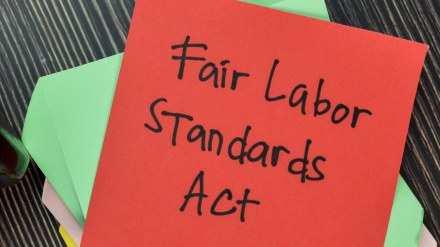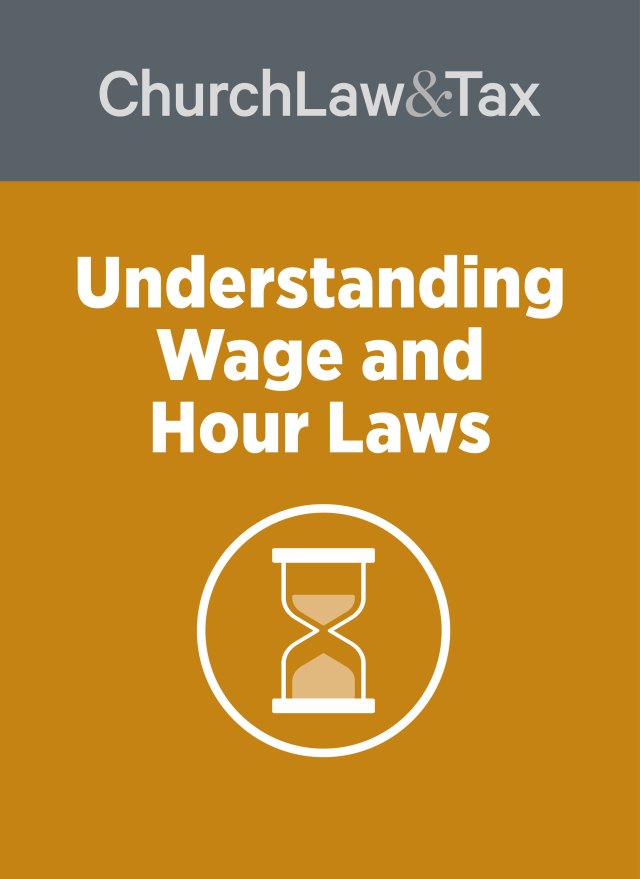On May 6, 2021, the US Department of Labor (DOL) announced the withdrawal of the Independent Contractor Rule adopted in early January by the Trump administration. As a result, the minimum wage and overtime pay requirements of the Fair Labor Standards Act (FLSA) will apply to more employers, including churches.
Background
Enacted in 1938, FLSA requires that, among other things, covered employers pay their nonexempt employees at least the federal minimum wage for every hour worked and overtime pay for every hour worked over 40 hours in a workweek. It also mandates that employers keep certain records regarding their employees.
The FLSA does not define the term “independent contractor.” Federal courts have uniformly held, and the DOL has consistently maintained, that independent contractors are not “employees” for purposes of the FLSA. The courts and the DOL have struggled to articulate definitions distinguishing employees from contractors. The US Supreme Court has, on a number of occasions, indicated that there is no single rule or test for determining whether an individual is an independent contractor or an employee for purposes of the FLSA. The Court has held that it is the total activity or situation which controls.
Among the factors the Court has considered significant:
- The extent to which the services rendered are an integral part of the principal’s business.
- The permanency of the relationship.
- The amount of the alleged contractor’s investment in facilities and equipment.
- The nature and degree of control by the principal.
- The alleged contractor’s opportunities for profit and loss.
- The amount of initiative, judgment, or foresight in open market competition with others required for the success of the claimed independent contractor.
- The degree of independent business organization and operation.
The Court has noted that there are certain factors that are immaterial in determining whether there is an employment relationship. Such facts as the place where work is performed, the absence of a formal employment agreement, or whether an alleged independent contractor is licensed by a state or local government are not considered to have a bearing on determinations as to whether there is an employment relationship.
Additionally, the Supreme Court has held that the time or mode of pay does not control the determination of employee status. Suffice it to say that the Supreme Court’s pronouncements have been of very limited assistance.
How the Trump administration rule affected employee classifications
On January 6, 2021, the DOL announced a new “Independent Contractor Rule” clarifying the standard for employee-versus-independent-contractor status under the FLSA. The effective date of the Independent Contractor Rule was March 8, 2021. The rule, adopted by the Trump administration, generally made it easier for employers to classify workers as contractors rather than employees, thereby relieving employers of the need to comply with the FLSA.
In the final rule, the DOL reaffirmed an “economic reality” test to determine whether an individual is an independent contractor or employee.
A federal appeals court previously described this six-factor economic reality test as follows:
- the degree of the alleged employer’s right to control the manner in which the work is to be performed;
- the alleged employee’s opportunity for profit or loss depending on his managerial skill;
- the alleged employee’s investment in equipment or materials required for his task, or his employment of helpers;
- whether the service rendered requires a special skill;
- the degree of permanency of the working relationship; and
- whether the service rendered is an integral part of the alleged employer’s business.
- The final rule also:
Identified and explained “two core factors” that are most probative to the question of whether a worker is economically dependent on someone else’s business or is in business for him or herself:
- The nature and degree of control over the work.
- The worker’s opportunity for profit or loss based on initiative and/or investment.
- Why the DOL withdrew the rule
- On May 6, 2021, the DOL announced the withdrawal of the Independent Contractor Rule for the following reasons:
- The Independent Contractor Rule was in tension with the FLSA’s text and purpose, as well as relevant judicial precedent.
- The Rule’s prioritization of two “core factors” for determining employee status under the FLSA would have undermined the longstanding balancing approach of the economic realities test and court decisions requiring a review of the totality of the circumstances related to the employment relationship.
- The rule would have narrowed the facts and considerations comprising the analysis of whether a worker is an employee or an independent contractor, resulting in workers losing FLSA protections.
- The Biden administration has yet to define and promote a new test for distinguishing employees from contractors, but President Biden has said that he favors California’s “ABC Test.” The California Department of Industrial Relations defines this test as follows:
Under the ABC test, a worker is considered an employee and not an independent contractor unless the hiring entity satisfies all three of the following conditions:
A. The worker is free from the control and direction of the hiring entity in connection with the performance of the work, both under the contract for the performance of the work and in fact;
B. The worker performs work that is outside the usual course of the hiring entity’s business; and
C. The worker is customarily engaged in an independently established trade, occupation, or business of the same nature as that involved in the work performed.
- What this means for churches
- As stated at the beginning of this article, the withdrawal of the Independent Contractor Rule means that the minimum wage and overtime pay requirements of the FLSA will apply to more employers, including churches. Note three important points.
- First, penalties and damages for FLSA overtime and minimum wage violations can be significant, and include the following:
- A $2,074 maximum civil monetary penalty.
- “Double back pay” consisting of (1) backpay (i.e., the amount of unpaid overtime and minimum wage) and (2) “liquidated damages” (an amount equal to any backpay owed). Damages can be sought either in a private civil lawsuit by an aggrieved employee, or by the DOL’s Wage & Hour Division.
- Second, be cautious in treating any worker as an exempt independent contractor. As noted above, the distinction between an exempt contractor and a nonexempt employee is confusing and has not been helped by recent precedent from the DOL or the courts.
- Third, when in doubt, seek legal counsel.





